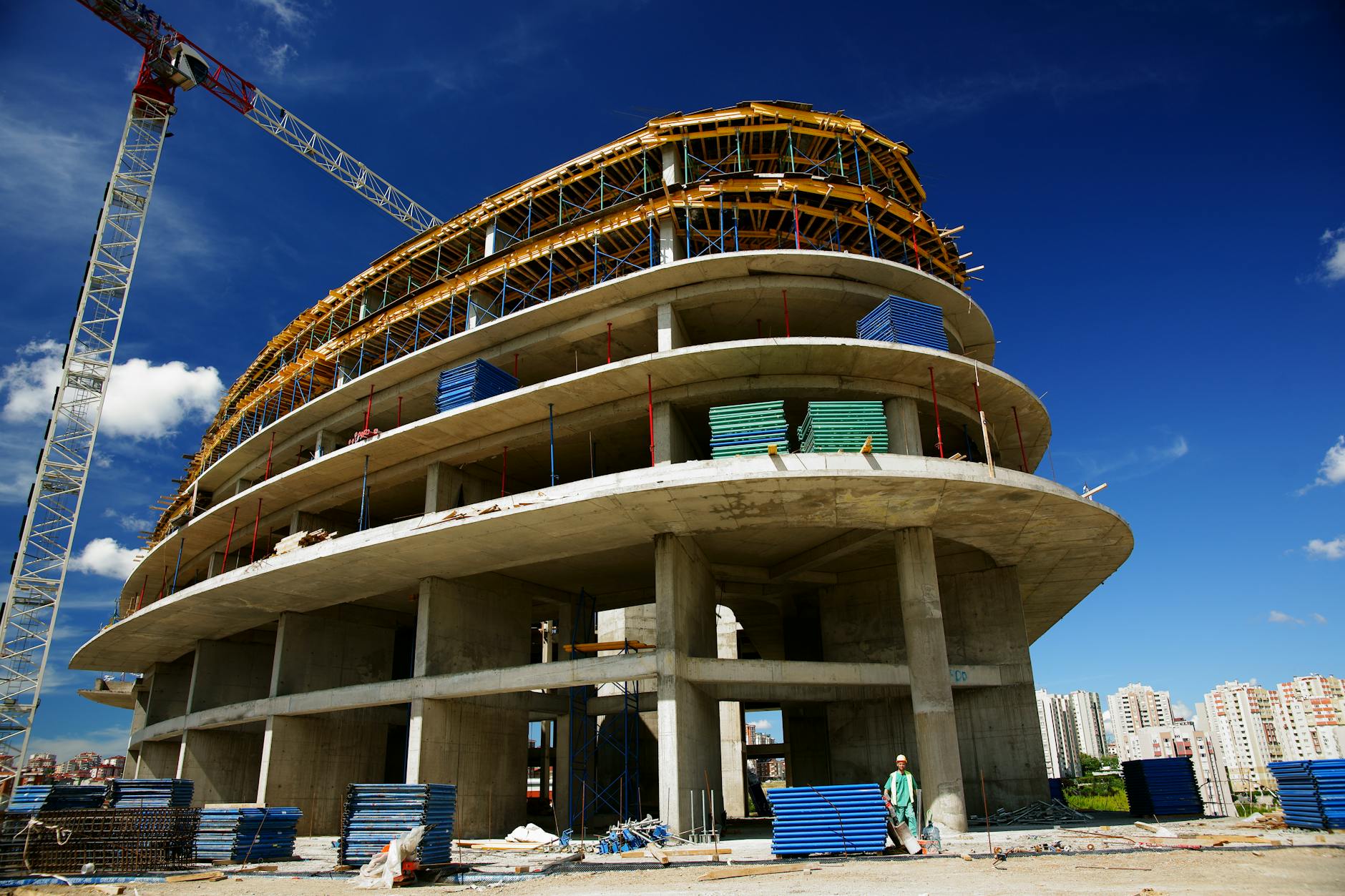Mastering Building Construction Types: A Comprehensive Guide
In understanding the importance of determining a building's construction type, we address crucial factors that impact safety, insurance, and building regulations. Knowing the construction type of a building is essential for ensuring the safety of its occupants in the event of a fire or other emergencies. It also plays a vital role in assessing insurance premiums and coverage, as well as complying with building codes and regulations.
By identifying and addressing a building's construction type, individuals can make informed decisions regarding safety measures, evacuation plans, and risk mitigation strategies. This knowledge not only empowers property owners and occupants but also aids emergency responders in effectively managing potential hazards.
In this post, we will delve into the various construction types and their distinguishing characteristics, providing a comprehensive overview to aid in the determination process. Whether you are a property owner, tenant, insurance professional, or industry stakeholder, understanding a building's construction type is pivotal for fostering a safe and resilient built environment.
Understanding Construction Types
When it comes to constructing a building, understanding the different construction types is crucial. The International Building Code (IBC) classifies building construction into five main categories - Type I, Type II, Type III, Type IV, and Type V. Each type has distinct characteristics in terms of materials and fire resistance, and is typically utilized in specific scenarios.
Type I Construction
Type I construction is characterized by its use of non-combustible materials such as concrete and steel. These materials provide exceptional fire resistance, making Type I construction suitable for high-rise buildings and structures with stringent fire safety requirements. The use of concrete and steel in Type I construction ensures a high level of durability and stability, making it ideal for buildings where safety and longevity are paramount.
 Photo by Pixabay
Photo by Pixabay
Type II Construction
Type II construction utilizes non-combustible materials such as concrete and steel for the primary structural elements, but can also include combustible materials in non-structural components. This construction type is commonly used in multi-story buildings where the outer walls are non-combustible and the interior elements are built with wood or other combustible materials. Understanding the properties of Type II construction is essential for architects, engineers, and builders working on projects that require a balance between fire resistance and cost-effectiveness.
Type III Construction
Type III construction involves the use of exterior walls that are made of non-combustible materials, while the interior structural elements and walls are built from any material allowed by the code, typically wood. This construction type is commonly utilized in mid-rise buildings and offers a balance between fire resistance and affordability. Understanding the specifics of Type III construction is crucial for construction professionals working on projects where both safety and cost considerations come into play.
Type IV Construction
Type IV construction, also known as heavy timber construction, involves the use of large wooden members for structural elements. While the exterior walls are still required to be non-combustible, the heavy timber elements offer a unique aesthetic appeal and fire resistance due to the charring of the wood's surface. Type IV construction is often seen in projects where a traditional or rustic design is desired, and where fire safety requirements can be met through the use of heavy timber elements.
Type V Construction
Type V construction predominantly uses wood or other combustible materials for all structural elements. This construction type is commonly employed in residential and light commercial buildings, where the use of non-combustible materials is limited, and fire resistance is achieved through other protective measures such as sprinkler systems and fire-retardant treatments. Understanding the unique considerations of Type V construction is essential for those involved in the construction of small-scale buildings with specific fire safety requirements.
Understanding the characteristics and applications of each construction type is essential for professionals in the construction and building design industry. By having a comprehensive knowledge of the various construction types, architects, engineers, and builders can make informed decisions and ensure the safety and efficiency of their projects.
As you delve deeper into the specifics of each construction type, it becomes evident that the choice of materials and construction methods significantly impacts a building's performance and safety. It's crucial to understand the nuances of each construction type to make well-informed decisions throughout the building design and construction process.
For further information on understanding the differences in construction types and the materials used, you can refer to authoritative sources such as Construction Materials for comprehensive insights into the world of construction materials and their applications.
Determining Construction Type
When determining a building's construction type, several factors come into play. Building plans review, material identification, and local building codes play a crucial role in ascertaining the construction type.
Building Plans Review
Reviewing building plans is an essential step in determining the construction type of a building. Architectural drawings and specifications provide valuable insights into the structural design and materials used. By examining these plans, one can identify the building's framework, load-bearing elements, and fire resistance measures. Understanding the layout and components outlined in the building plans is pivotal to accurately categorizing the construction type.
 Photo by Karolina Grabowska
Photo by Karolina Grabowska
Material Identification
Identifying the building materials is another critical aspect of determining the construction type. On-site inspections and material testing are instrumental in this process. Whether it's assessing the structural framework or examining the fire resistance of materials, a comprehensive understanding of the building's components is vital. By pinpointing the materials utilized, from the foundation to the roof, one can accurately classify the construction type based on the composition and integrity of these materials.
 Photo by Monstera Production
Photo by Monstera Production
Local Building Codes
Local building codes significantly influence the determination of construction type. These codes classify buildings into different types based on their structural characteristics and fire resistance ratings. Understanding the specific regulations and requirements outlined in the local building codes is crucial. Compliance with these codes not only impacts the initial construction but also influences subsequent building inspections and maintenance. Therefore, staying abreast of local building codes is essential for accurately ascertaining the construction type of a building.
 Photo by Maria Orlova
Photo by Maria Orlova
Importance of Identifying Construction Type
Understanding a building's construction type is crucial for various reasons, including safety considerations, insurance implications, and building regulations compliance. Identifying the construction type plays a pivotal role in ensuring the safety and well-being of occupants, the feasibility of insurance coverage, and adherence to legal requirements.
Safety Considerations
The construction type of a building is directly linked to its fire resistance and overall safety. Different construction types possess varying degrees of fire resistance, affecting evacuation plans and firefighting strategies. For instance, a wooden-framed building may pose different challenges and hazards compared to a steel-framed structure in the event of a fire. By accurately identifying the construction type, stakeholders can proactively assess and mitigate potential safety risks, ultimately enhancing the overall safety of the building.
 Photo by Engin Akyurt
Photo by Engin Akyurt
Insurance Implications
The construction type significantly influences insurance premiums and coverage. Insurance companies evaluate the risk associated with different construction types when determining property insurance rates and coverage policies. Understanding the construction type of a building is crucial for property owners to make informed decisions about insurance options and ensure they have adequate coverage in place. By accurately identifying the construction type, property owners can potentially lower insurance risks and costs.
Building Regulations Compliance
Accurate identification of a building's construction type is essential for compliance with building regulations. Local jurisdictions often enforce specific regulations based on construction type, and non-compliance can lead to legal and financial implications. By ensuring the proper identification of construction type, property owners and stakeholders can uphold legal standards, avoid penalties, and maintain a safe and compliant built environment.
By recognizing the importance of identifying construction types in terms of safety, insurance premiums, and building regulations compliance, stakeholders can proactively address potential risks, make informed decisions, and adhere to legal requirements, ultimately promoting a safer and more secure built environment.
Conclusion
Understanding a building's construction type is crucial for ensuring safety, obtaining the right insurance coverage, and complying with regulations. By identifying the construction type, whether it's fire-resistant Type I or wood-framed Type V, property owners and stakeholders can make informed decisions about risk management and structural integrity. With this knowledge, they can mitigate potential hazards and ensure that the building meets the necessary standards. Ultimately, comprehending the different construction types empowers individuals to protect both their investments and the people who interact with the building.
In summary, the impact of determining a building's construction type is far-reaching, influencing safety measures, insurance considerations, and regulatory adherence. It's essential to grasp the nuances of construction types to navigate the complexities of the built environment effectively. Whether for residential, commercial, or industrial properties, this understanding forms the cornerstone of informed decision-making and proactive risk management.